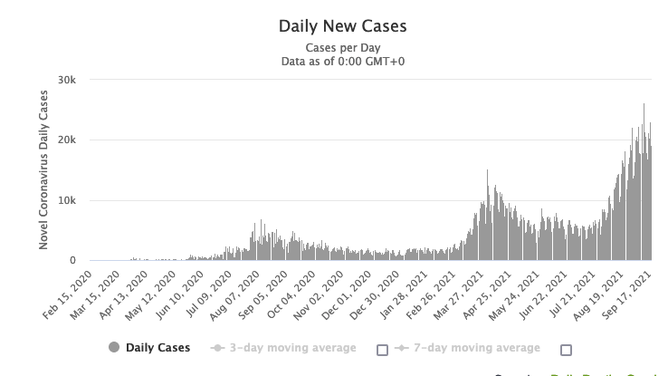Scott Gottlieb: 'Nobody Knows' Where That Six-Foot Social Distancing Rule Came From
Former Food and Drug Administration commissioner Scott Gottlieb and his incredible hair appeared on CBS's "Face The Nation" and addressed one of the big questions that have been on the minds of people since it was instituted. Where exactly did that whole six-foot social distancing rule come from? You know, the rule that led to sticker companies making millions of dollars as grocery stores directed people to "STOP HERE" before they got within six feet of another customer.
“Nobody knows where it came from. Most people assume that the six feet of distance, the recommendation for keeping six feet apart, comes out of some old studies related to flu, where droplets don't travel more than six feet,” Gottlieb told Margaret Brennan.
That's right, there was no study that six feet of social distancing would stop you from getting the 'VID.
Gottlieb told Brennan that the CDC's initial recommendation to the White House was 10 feet of social distancing, but that was shot down.
“So the compromise was around six feet. Now imagine if that detail had leaked out. Everyone would have said, 'This is the White House politically interfering with the CDC's judgment.' The CDC said 10 feet, it should be 10 feet, but 10 feet was no more right than six feet and ultimately became three feet,” Gottlieb said.
“But when it became three feet, the basis for the CDC's decision to ultimately revise it from six to three feet was a study that they conducted the prior fall. So they changed it in the spring.”
From 10 to six to three feet.
Now do masks!
Keep in mind in the Philippines where the country has had a mask mandate going strong and where people were told they would be required to wear masks until 50 million Filipinos were vaccinated, COVID cases have risen sharply all summer.

Not only has the Philippines ordered its people to wear masks, but the nation's schools are also closed for a second consecutive year. We're talking two straight years of children not going to school. 27 million students. No school.
“I cannot gamble on the health of the children,” President Rodrigo Duterte said in June as his health department recommending opening the schools.
And so 2,000 schools are closed. An estimated 57% of the 23 million households in the Philippines do not have internet access.